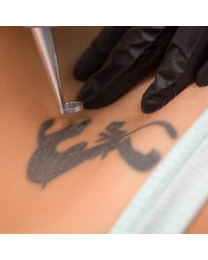Removal of skin tags for cosmetic purposes.
Skin tags are small, soft pieces of skin that stick out on a thin stem. They most often appear on the neck, armpits, upper trunk, and body folds. The cause of skin tags is not known. They are harmless.
Why remove a skin tag?
Most skin tags don't require treatment. But sometimes people want to remove them for cosmetic reasons or because they cause discomfort when they rub against clothing or get caught in jewelry.
How do doctors remove skin tags?
Your doctor may remove a skin tag in any of these ways:
- Cutting it off. Skin tags may be snipped off with a scalpel or surgical scissors.
- Freezing it with liquid nitrogen. Your doctor will swab or spray a small amount of super-cold liquid nitrogen on the skin tag. You might have a small blister where the skin tag was, but it will heal on its own.
The procedure may hurt a little, but your doctor will numb the area with an anesthetic before he or she begins. If the procedure causes any bleeding, your doctor may apply a medicine that helps stop the bleeding. Then he or she will put a bandage on it. These procedures usually leave no scars or marks.
| Benefits |
|
|---|---|
| FAQs | What are skin tags? Skin tags are common, especially as a person ages. They don’t cause any harm, but if you have a skin tag that is bothering you, you should talk to your doctor about having it removed. They are usually less than 2mm in size, but they can grow much larger. They feel soft, and can be smooth and round, wrinkly and uneven, or look like a grain of rice. They can be flesh-colored or darker, sometimes dark blue. What causes skin tags? They grow both in men and women and are more common in older people and people living with type 2 diabetes. Pregnant women are also more likely to develop skin tags, although they usually disappear after the baby is born. |
| Size | N/A |
| Brand | Other Treatments |











